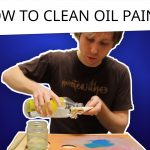Painting en plein air master class for beginners
Painting en plein air master class for beginners
Recently my friend finished a video which we shot for our entertainment while I was telling him a little about how I work on underpainting and how I paint landscapes. We now know that we need a cameraman for cases like this and that shooting our backs is not the best idea :)︎ When we came back home, it appeared that on occasion we didn’t focus on the canvas. Also we need a microphone. Next time we will try do better, it was just a pilot video. Probably, those who have never worked en plein air can get some use from this video.
Summary:
- One of the ways to paint en plein air as follows: in a preliminary drawing we outline the shapes, and we will work out the details later in the underpainting stage and when working with color.
- By using only the form of the shapes you can convey a space and objects in this space. You don’t even need to do shadowing, that’s how powerful this method is.
- Try to make objects random by their shapes so that they look natural.
- The dark shapes create the shape of the light ones.
- It’s better to squeeze the oil paints in a particular sequence, for example, from cold to warm.
- Paint the underpainting similar to how you would work with watercolors. The goal is to convey the tonal relations. In this master class we don’t go deep into the details of this stage, and we work by the principle of “from general to particular”.
- Each layer of the paint influences the following layer, and you should take that into account, starting with the underpainting, the bottom layer.
- The furrows of spots (shapes) add a “deepness” to a landscape, and they lead the viewer’s eye in depth.
- Usually light areas are darker in a reflection than how they appear in nature, and shadows are usually lighter.
Recent Posts


